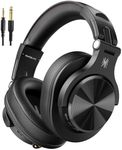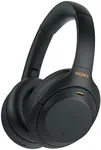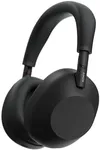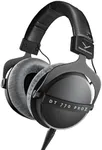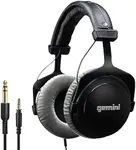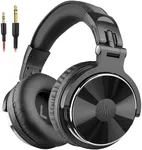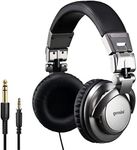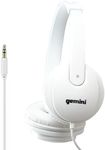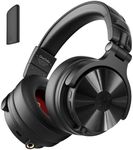Buying Guide for the Best Headphones For Video Editing
When choosing headphones for video editing, it's important to focus on features that will provide accurate sound reproduction, comfort for long editing sessions, and durability. The right pair of headphones can make a significant difference in your editing process, ensuring that you hear every detail clearly and can make precise adjustments to your audio tracks. Here are some key specifications to consider when selecting headphones for video editing.Sound QualitySound quality is crucial for video editing because you need to hear every detail in your audio tracks. Look for headphones with a wide frequency range (20 Hz to 20 kHz is standard) to ensure you can hear both the low and high ends of the spectrum. High-quality drivers and a balanced sound profile are also important to avoid any coloration of the sound, which can lead to inaccurate editing.
ComfortComfort is essential since video editing sessions can be long. Over-ear headphones with padded ear cups and an adjustable headband are generally more comfortable for extended use. Look for lightweight designs and materials that won't cause discomfort or fatigue over time. If possible, try on different models to see which ones feel the best for you.
Noise IsolationNoise isolation helps you focus on your audio without being distracted by external sounds. There are two types: passive and active noise isolation. Passive noise isolation relies on the physical design of the headphones to block out noise, while active noise cancellation (ANC) uses technology to reduce ambient sounds. For video editing, passive isolation is often sufficient, but if you work in a noisy environment, ANC can be very beneficial.
DurabilityDurability is important because you'll likely be using your headphones frequently. Look for models made with high-quality materials like metal or reinforced plastic. Detachable cables can also add to the longevity of your headphones, as they can be easily replaced if they get damaged. Check for user reviews and ratings to get an idea of the build quality and longevity of the headphones.
ImpedanceImpedance refers to the resistance of the headphones and affects how much power they need to deliver sound. Lower impedance headphones (under 50 ohms) are suitable for use with portable devices like laptops and smartphones, while higher impedance headphones (over 50 ohms) may require a dedicated headphone amplifier to perform their best. For video editing, if you're using professional audio equipment, higher impedance headphones can provide better sound quality.
Frequency ResponseFrequency response indicates the range of frequencies that the headphones can reproduce. A wider frequency response range (e.g., 5 Hz to 40 kHz) can provide more detailed sound, but the standard range (20 Hz to 20 kHz) is usually sufficient for most editing tasks. Pay attention to how the headphones handle both the low and high ends of the spectrum to ensure accurate sound reproduction.
Open-Back vs. Closed-BackOpen-back headphones have a design that allows air and sound to pass through the ear cups, providing a more natural and spacious sound. Closed-back headphones, on the other hand, have a sealed design that isolates sound and prevents audio leakage. For video editing, closed-back headphones are generally preferred because they offer better noise isolation and prevent sound from leaking into your recordings.
